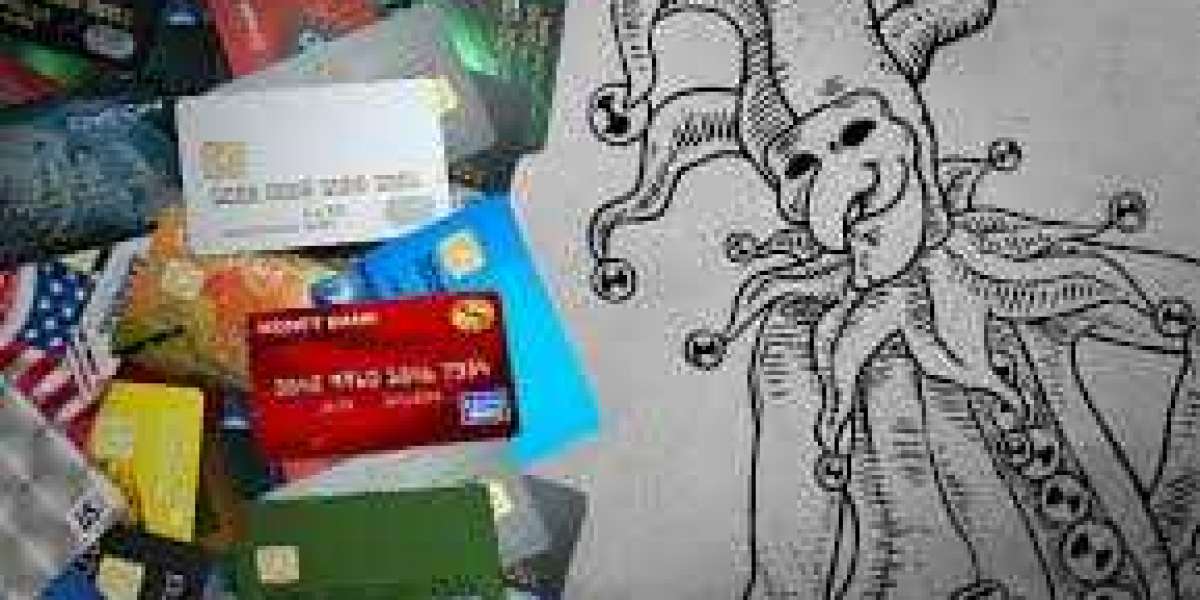Here's a breakdown of how Joker Stash made its money:
1. Selling Stolen Credit Card Data:
At its core, Joker Stash operated as a marketplace for stolen credit card details, but it wasn’t limited to just any type of data. The site specialized in selling "fullz", a term used in the cybercrime world to describe complete sets of stolen data that typically included:
Credit card numbers
Card expiration dates
Card verification values (CVVs)
Cardholder names
Billing addresses
Personal identification information (PII) like Social Security numbers, email addresses, and phone numbers
The stolen credit card data sold on Joker Stash often came from large-scale data breaches, where hackers infiltrated financial institutions, retailers, or online services and stole thousands or millions of credit card numbers. The stolen data was then uploaded to Joker Stash and sold to other cybercriminals who would use it for fraud or resell it on other underground forums.
How they made money:
Transaction Fees: Joker Stash charged fees for each transaction, either as a flat fee or as a percentage of the total sale. This fee structure helped the marketplace generate significant revenue.
Bulk Data Sales: Sellers on the platform could upload large batches of stolen data (often tens or hundreds of thousands of stolen credit cards) for sale. The marketplace would typically take a percentage of each sale, ensuring that it profited as the stolen data changed hands.
2. High-Quality Data and Reputation:
Joker Stash became a go-to source for high-quality, up-to-date stolen credit card data. The marketplace maintained a reputation system, which allowed buyers to rate the data's quality and the reliability of vendors. High-quality stolen credit card data, particularly from major retailers or banks, fetched a premium price.
Why the platform was successful:
Freshness of Data: The data on Joker Stash was often "fresh," meaning it came from recent breaches. Fresh data is highly valuable in the underground market because it’s more likely to be usable before the bank or card issuer catches on and cancels the cards.
Reliable Vendors: Joker Stash worked hard to establish trust among users. By maintaining a reputation system, it helped ensure that buyers could find reputable sellers who provided working, high-value data.
3. Money Laundering and Fraud Tools:
To further enhance its earning potential, Joker Stash also provided various tools and services that helped users launder their ill-gotten gains and profit from the stolen data. This made the marketplace a one-stop shop for criminals looking to profit from fraud.
Some of the ways Joker Stash contributed to laundering money or facilitating fraud included:
"Carding" Services: Many users on the site would purchase stolen card data and use carding tools to test if the cards worked before reselling them or using them for fraud.
“Dump” Data: This referred to data from magnetic stripes of cards (used for physical, swiped transactions). Criminals who purchased dump data could use it to create counterfeit cards.
Cash-out Services: Some vendors on the site provided services to help cybercriminals cash out the stolen funds, either by converting it to cryptocurrencies or withdrawing money via ATMs.
These services made Joker Stash even more appealing to a wide range of criminals, including hackers, fraudsters, and money launderers, which only contributed to its revenue.
4. International Reach and High-Volume Sales:
Joker Stash was one of the largest marketplaces for stolen financial data globally. The site had users from various countries, making it a global hub for cybercriminal activity. The international reach of Joker Stash allowed it to sell data to buyers in different regions, further increasing the volume of transactions.
How this translated to millions:
Volume of Sales: The marketplace handled thousands of transactions per day, with each transaction often involving large quantities of stolen data. Even though individual sales might not have been massive, the high transaction volume created a steady revenue stream for Joker Stash.
International Criminal Networks: Joker Stash facilitated transactions that allowed international criminal networks to access stolen data, making the platform a linchpin in global cybercrime. These networks, in turn, made large purchases in bulk, contributing significantly to the site’s income.
5. Escrow System and Trust:
Joker Stash used an escrow system to hold funds during transactions. This system held buyers’ payments in escrow until they confirmed that the data they had received was valid and usable. If the transaction went as expected, the funds would be released to the seller.
The use of escrow helped increase trust between buyers and sellers, making it more likely that transactions would go through smoothly. The marketplace would often take a small cut of each transaction, helping to generate revenue with minimal risk of chargebacks or fraud complaints.
6. Secrecy and Security:
To ensure the safety of the marketplace’s operations and maintain its revenue stream, Joker Stash invested heavily in security measures to protect its infrastructure. This included using proxy chains, VPNs, and encrypted communications to hide the identities of its administrators and users. By keeping the site secure and maintaining a high level of anonymity, Joker Stash minimized the risk of being compromised by law enforcement or rival criminals.
Additionally, the platform used multi-signature wallets and other secure payment methods to reduce the risk of theft from its own accounts or escrow system.
7. Ransom Payments and Exploits:
Joker Stash, as part of the broader cybercriminal ecosystem, likely had connections to individuals involved in ransomware attacks. For example, after ransomware groups would steal data from businesses, they could then sell that stolen data on Joker Stash. Joker Stash would likely receive a commission or fee for facilitating these types of sales.
Conclusion:
Joker Stash made millions of dollars by operating a marketplace that catered to the growing demand for stolen financial data. The platform's success was built on its ability to supply high-quality, "fresh" data, its secure infrastructure, and its strong reputation in the cybercriminal community. By leveraging the power of bulk data sales, fraud tools, and money laundering services, it attracted thousands of users, enabling it to handle millions of dollars in transactions.
Ultimately, the platform’s rapid growth and success were due to the scale at which it could operate, the quality of the services it offered, and its ability to maintain security and anonymity for both buyers and sellers. However, this same reliance on criminal enterprise and vulnerability to law enforcement efforts led to its eventual takedown.







